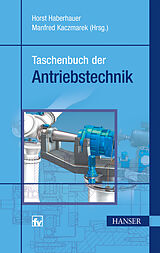Regenerative Energiesysteme Volcker Quaschning Ebook Store
Herziene Statenvertaling Als Ebook Download ->>->>->>1cc1596b1f. Powered by Rebelmouse. 'Regenerative Energiesysteme' by Volker Quaschning is a digital PDF ebook for direct download to PC, Mac, Notebook, Tablet, iPad, iPhone, Smartphone, eReader - but.

Apex Sql Crack Keygen Idm. 6 What is the origin of the flexibility of German nuclear power plants? >A high flexibility was implemented into the design of German nuclear power plants since the 1970ies. >Flexibility is not a result of an ex post upgrade.
>At that time, the German government was aiming at an extended use of nuclear power and thus, an increase of the nuclear share in power production was to be expected. >Changes in demand would have needed to be balanced by nuclear power plants according to the common practice in France today. 'Social-democratic chancellor Willy Brandt, who took office in 1969, had been a committed friend of nuclear power before. [ ] The energy program published under Brandt in 1973 recommended the commission up to Megawatts of nuclear power until That would have corresponded to 40 to 50 reactors.' (Frankfurter Rundschau, translated) PAGE 6. 7 Extension of the '4.
Deutsches Atomprogramm'. >Social-liberal federal government ( ) >Autumn 1973: First oil crisis in connection with Yom Kippur war >Extension of the '4. Deutsches Atomprogramm' (4 th German nuclear power program): 'labored development of nuclear power until 1985' goals: 18,000 MW e of nuclear power until,000 MW e of nuclear power until 1985 ('preferably MW e ') Gross power production in 1985 (actual data) What if? Hydro 4,1% hydro 4,1% nuclear 31,2% fossil 27,0% fossil 64,7% nuclear 68,9% PAGE 7. 9 Examples from practical experience (2): Biblis was operated in load-follow mode for many years. >Routine adjustment of power production inline with demand from 1986 to1994 >optimizing the power plant fleet >preventing coal-fired power plants from damage >Comparable operation also in other German power plants 100% 90% 80% 70% 60% 50% 40% 30% 20% 10% 0% Biblis A January February March April May June July August September October November December 100% 90% 80% 70% 60% 50% 40% 30% 20% 10% 0% Biblis B January February March April May June July August September October November December After the deregulation of the markets, emphasis lay mainly on economical aspects. This caused operators to maximize the load factor of nuclear power plants PAGE 9.
14 Primary coolant temperature [ C] Reactor control Example: Pessurized water reactor Design: load changes 'fully automated' from the control room Part-load diagram Fast, 'gentle' load changes with a constant average primary coolant temperature Warriors Orochi 3 Psp English Patch. >Low fatigue of material in the reactor coolant system >Fast control: control rods >Supplemental control: boric acid Safety: Double surveillance of reactor physical parameters (e.g. Neutron flux, power density) by limitation systems and reactor protection Control range Power PAGE 14 15 Restrictions to load change ability: Reactor and neutron physical boundaries, safety issues. Good Practice: No load changes during fuel 'conditioning' (begin of cycle) at a low boron concentration in PWR (end of cycle) along with fuel element damages (whole cycle). Shortly before and during recurrent tests of the core instrumentation Annual cycle Conditioning Continuous operation Stretch-out Outage PAGE 15 16 Content Myths and Facts Technical design Operational practice PAGE 16. 17 Electrical Power [MW] Electrical Power [MW] High flexibility could be shown in practice 26 Dec 2009: Nuclear power plants meeting the demands of the electrical grid RWE units RWE + E.ON 1000 KWB B KRB B KRB C KKE ~ 4,700 MW:00 AM 3:00 AM 6:00 AM 9:00 AM 12:00 PM E.ON units:00 AM 3:00 AM 6:00 AM 9:00 AM 12:00 PM KBR KKG KKI 1 KKI 2 KKU KWG:00 AM 3:00 AM 6:00 AM 9:00 AM 12:00 PM >Temporary increase in wind power coincided with a low demand. >Total reduction of nuclear power (RWE/E.ON): ~ 4,700 MW PAGE 17 18 Output power reduction at the NPPs operated by RWE 01 Jan 2011 Unit power [MW] Total power [MW] Reduction: ~ 2800 MW:00 AM 6:00 AM 12:00 PM 6:00 PM KWB A KWB B KRB B KRB C KKE:00 AM 6:00 AM 12:00 PM 6:00 PM >Ramp rates of ~ 25 MW/min PAGE 18 19 Different kinds of balancing energy Minimum requirements (Germany). >Primary control: Adjustment of the power output within 30 seconds by 2% 1 of the nominal unit power as response to a 200 mhz signal (frequency stabilization).
The adjusted output level has to be maintained for 15 min. >At nuclear power plants usually with approx. ± 12 MW/sec within a range of MW >Secondary control: Adjustment of the power output within 5 minutes within the qualified range. Remote control required. >Example: 1200 MW unit, qualified range 120 MW, ramp rate: 24 MW/min >Minutes reserve: Adjustment of the power output within 15 minutes within the qualified range. >Example: qualified range 225 MW, ramp rate: 15 MW/min >Nuclear power plants fulfill the technical requirement to provide all kinds of balancing energy.
1 Depending on the optimum dispatch, less than 2% of P max be can delivered as response to frequency deviation of +/-200 mhz; nevertheless 2% of P max have to be attained during the prequalification.